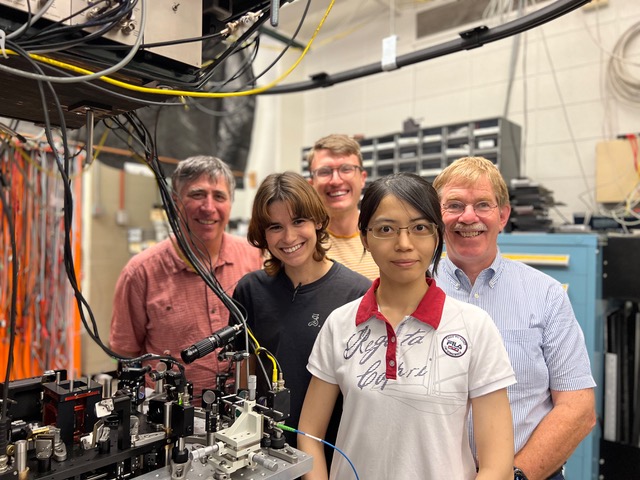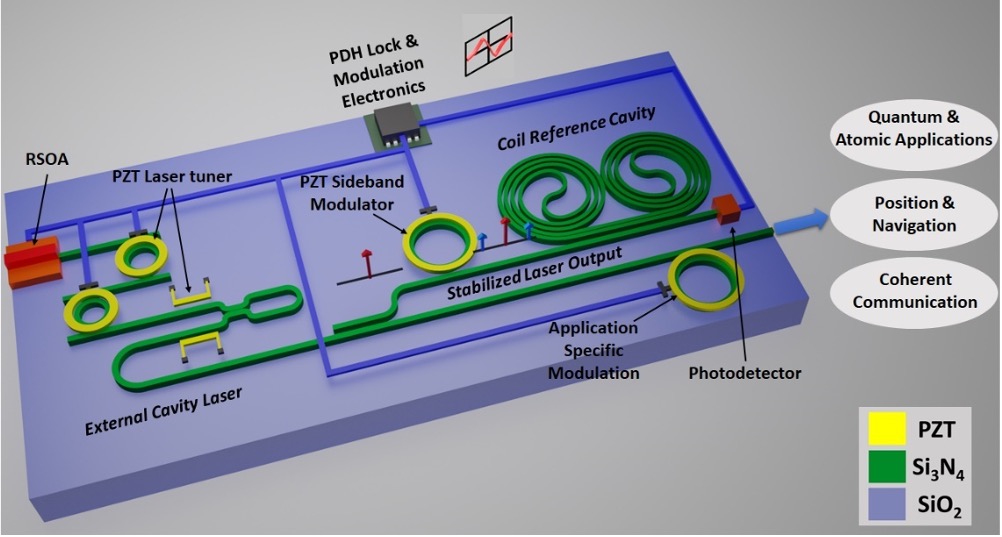Texas Engineers are leading a multi-university research team, funded by NASA’s Space Technology Mission Directorate, that will build technology and tools to improve measurement of important climate factors by observing atoms in outer space.
They will focus on the concept of quantum sensing, which involves observing how atoms react to small changes in their environment, and using that to infer the time-variations in the gravity field of the Earth. This will enable scientists to improve how accurately several important climate processes can be measured, such as the sea level rise, the rate of ice melt, the changes in land water resources and ocean heat storage changes.
“There have been tremendous advances in quantum methods recently, mostly in the context of computing,” said Srinivas Bettadpur, leader of the new project and professor of Aerospace Engineering and Engineering Mechanics at The University of Texas at Austin. “We want to use quantum sensing technology in space – where you can watch the entirety of the planet – to solve next-generation problems by observing, interpreting and understanding climate processes.”
The new Quantum Pathways Institute includes researchers from UT Austin, University of Colorado Boulder, University of California Santa Barbara, California Institute of Technology and the U.S. National Institute for Standards and Technology. The researchers received up to $15 million in funding from NASA over five years for the institute.
This will be the first effort to establish what is known as “Quantum 2.0.” That is advancing beyond the quantum principles known in physics and translating them into usable device concepts.

The researchers will specifically look at changes in gravitational forces and what that means for climate. As climate shifts – with ice caps melting and sea levels and temperatures changing – that changes gravitational forces around the earth and in outer space. Atoms orbiting the earth react to those gravitational changes. By measuring those reactions, the researchers can give better readings of changes in climate processes.
The challenge for the team is two-fold. Parts of these sensing technologies exist today, but a lot of what they are building is new. Add to that the challenge of sending these instruments into orbit.
“You can’t have manual maintenance in space – once you send something out, it’s out of reach; you cannot see it,” said Bettadpur. “You have to put in a great deal of work to make sure the instrument will fly and the technology will function for several years, at least, to enable the discoveries.”
To build this technology from the ground up, and make it space ready, requires a large and diverse team of researchers. Bettadpur is an expert in orbital mechanics, gravity fields and space mission design.
Seth Bank and Dan Wasserman, professors in the Chandra Family Department of Electrical and Computer Engineering at UT Austin, will work with Daniel Blumenthal from UC Santa Barbara to develop the photonic, or light-based, integrated circuits for compact chips to measure small variations in Earth’s gravity from space. Ufuk Topcu, associate professor in the Department of Aerospace Engineering and Engineering Mechanics and the Oden Institute for computational engineering and sciences, will apply his expertise in modeling complex systems to develop models for quantum sensing systems that can be used to improve their reliability and autonomous operation – both of which are key for space applications where device maintenance is not an option.

Other team members – and their areas of expertise – on the project include:
- From the University of Colorado Boulder, Dana Anderson, an expert in experimental quantum physics and instrumentation; Penina Axelrad, an expert in quantum navigation and timing; Murray Holland, theoretical physics and quantum machine learning; Marco Nicotra, quantum optical control;
- From Caltech, Michael Watkins, former director of the Center for Space Research at UT Austin, former director of the NASA Jet Propulsion Laboratory, and an expert in systems, spaceflight and gravity science;
- And from the National Institute for Standards and Technology (Boulder), Michelle Stephens, a physicist and expert in precision measurement for space and quantum applications.
Read the NASA Press Release at: https://www.nasa.gov/press-release/nasa-awards-advance-3d-printing-quantum-tech-for-climate-research/
Read the CU Boulder story at: https://jila.colorado.edu/news-events/news/nasa-awards-grant-group-quantum-institutes-including-jila-and-university-colorado
Read the UT Cockrell School of Engineering story at: https://cockrell.utexas.edu/news/archive/9659-quantum-sensing-in-outer-space-new-nasa-funded-research-will-build-next-gen-tech-to-better-measure-climate
[Adapted from original source by Nat Levy, Cockrell School of Engineering]
